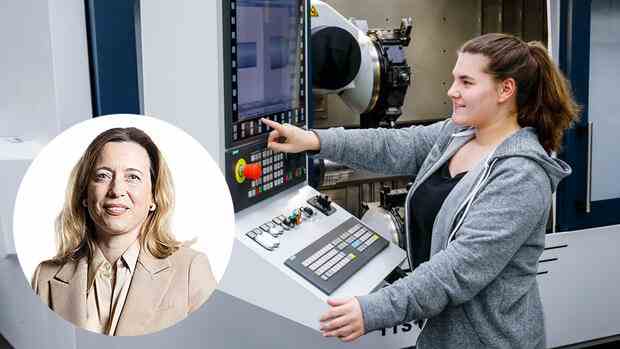Sabine Scheunert is Vice President Digital & IT Sales/Marketing at Mercedes-Benz AG
(Photo: Imago)
The automation of processes will increase significantly in the future. At Mercedes-Benz we already use automated software robots (bots) in almost all areas. The aim is to automate the operating processes as far as possible.
This is possible with robot-supported process automation, in technical jargon Robotic Process Automation (RPA). Repetitive, manual, time-consuming or error-prone activities are learned by bots and carried out automatically. The advantage of the bots: they are available around the clock; seven days a week, do not need breaks and are scalable.
We need to replace the “machine versus human” narrative
One could now assume that people will be replaced by machines. But this is not the case. These technologies relieve employees of monotonous tasks. New freedom is created in order to ideally even be able to concentrate on higher-value tasks with more added value.
Bots are gradually becoming more intelligent, for example by linking them to artificial intelligence, machine learning-based processes, optical character recognition (OCR) or natural language processing (NLP). This so-called cognitive automation has enormous future potential, because the RPA market is growing exponentially.
Top jobs of the day
Find the best jobs now and
be notified by email.
Used correctly, RPA is a clear productivity and innovation booster. Nevertheless, there are still numerous hurdles and ethical reservations when integrating it into everyday work.
We therefore urgently need a new narrative in society: Away from the supposed fight “machine against man” towards “machine and man”.
These three points are crucial when using robots
I consider three factors to be crucial for robot-supported process automation to develop its transformative power. All points have one thing in common. The human is the center of attention.
1. Automation must be thought of strategically and in an integrated way. RPA solutions are often used as a “patch-on” where existing processes and systems have inadequacies, thus only alleviating the actual problem.
When used correctly, RPA technologies change entire value chains and thus the profitability of products and platforms. According to the study “Robotic Process Automation 2021” by the International Data Group (IDG), RPA is currently already a high priority for around half of German companies.
By 2025, this proportion will increase to around 70 percent. Only those who already understand RPA as an essential strategic task can achieve long-term competitive advantages in the future.
2. Transparency and communication creates trust. Employees must be involved at an early stage in every automation decision. Because they know their processes best. In addition, the transparent communication of the automation goals is essential.
A uniform level of knowledge is required on how RPA technologies work and on the effects on one’s own work. Only this creates the basis for designing the new jobs of the future together as a team.
3. The secret lies in mutual success. RPA becomes a success factor if we manage to remove complexity and costs from the system on the one hand, and increase employee satisfaction on the other.
To do this, knowledge about RPA must be bundled and made accessible to everyone. For example, our employees share concrete ideas, experiences and use cases for the use of RPA technologies in the internal “Robotics Community”.
>> Read here: Robots build robots: ABB opens state-of-the-art factory in China
When we look back and take stock in a few years, I wish that, despite all the enthusiasm for the digital transformation, we have become even more aware of the true value of human innovation. And also how we were able to improve all of our (working) lives with it.
It’s time. The possible uses and potential of RPA are diverse. The essence lies in the fact that the relief of people is always in the foreground.
The author: Sabine Scheunert is Vice President Digital & IT Sales/Marketing at Mercedes-Benz AG
More: “It starts at 20,000 euros” – What medium-sized companies have to pay for robots
